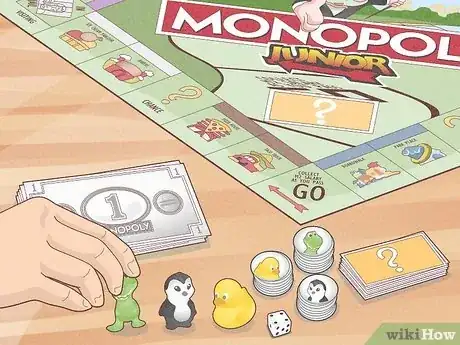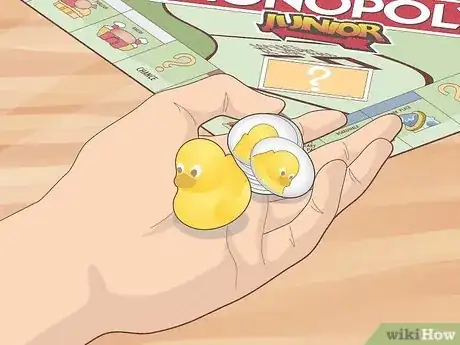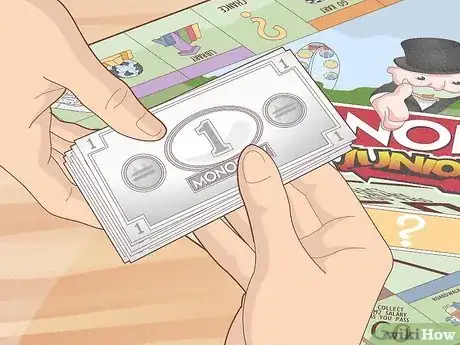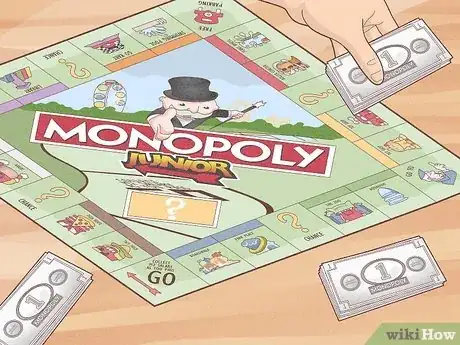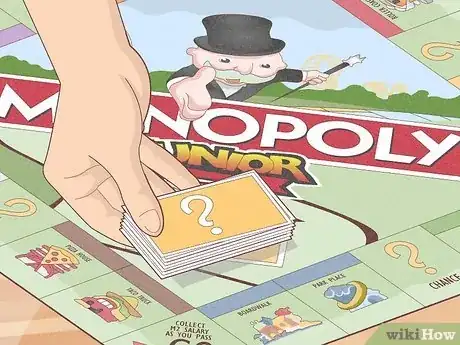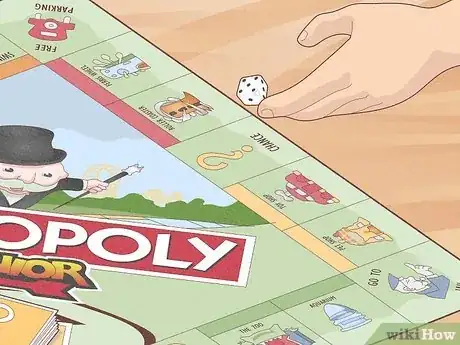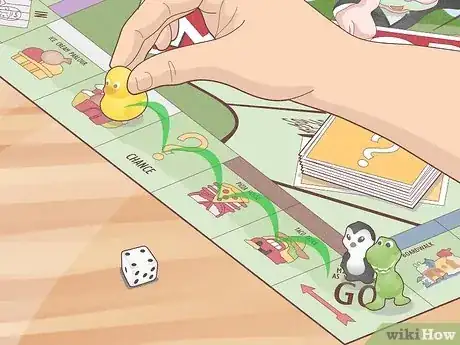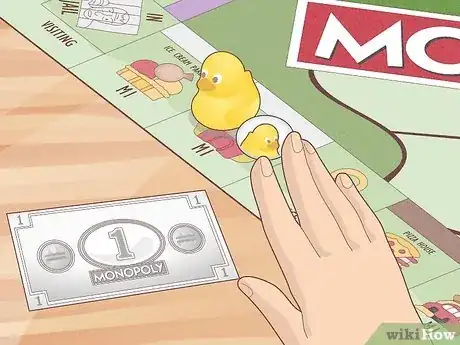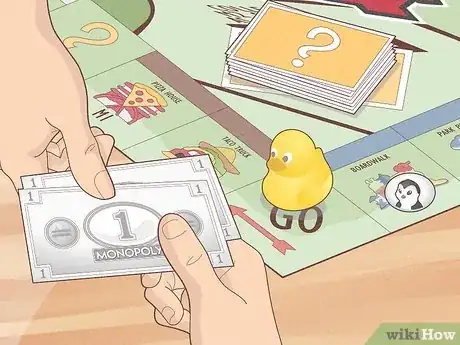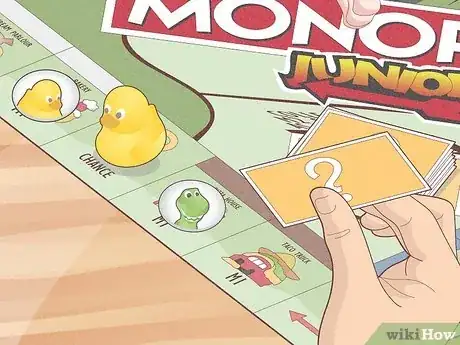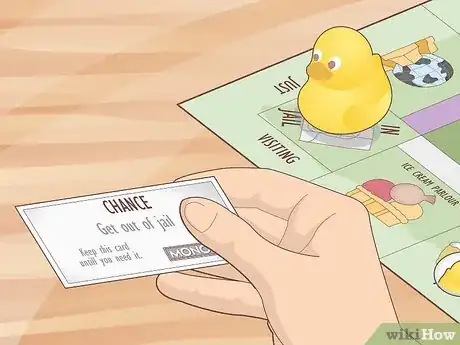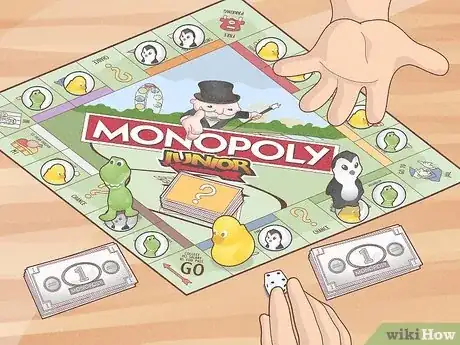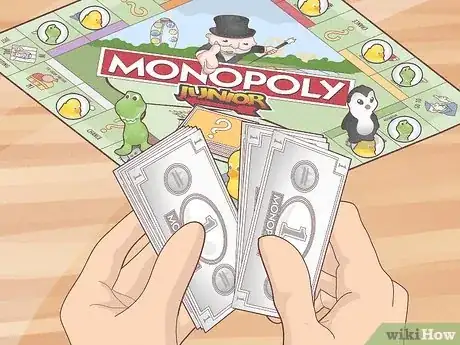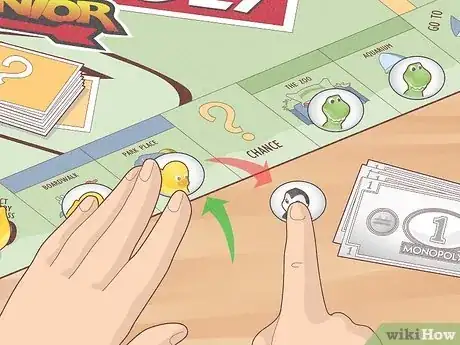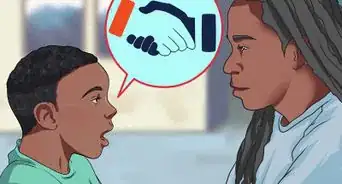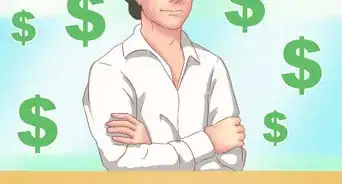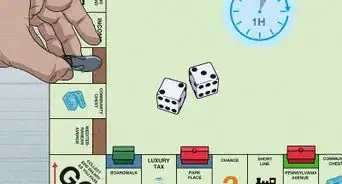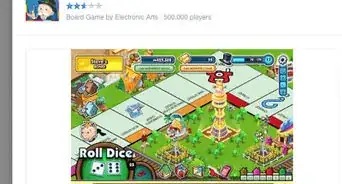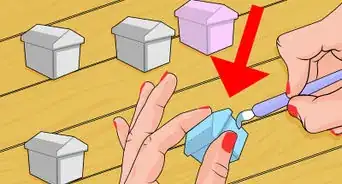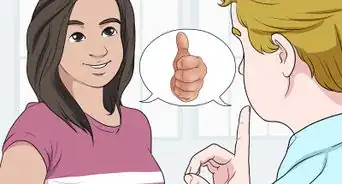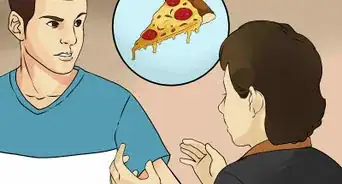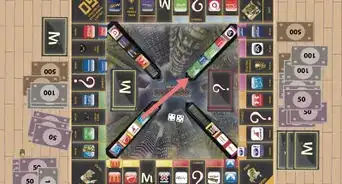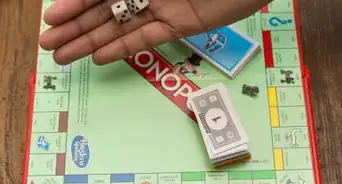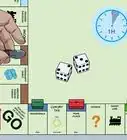This article was co-authored by wikiHow staff writer, Eric McClure. Eric McClure is an editing fellow at wikiHow where he has been editing, researching, and creating content since 2019. A former educator and poet, his work has appeared in Carcinogenic Poetry, Shot Glass Journal, Prairie Margins, and The Rusty Nail. His digital chapbook, The Internet, was also published in TL;DR Magazine. He was the winner of the Paul Carroll award for outstanding achievement in creative writing in 2014, and he was a featured reader at the Poetry Foundation’s Open Door Reading Series in 2015. Eric holds a BA in English from the University of Illinois at Chicago, and an MEd in secondary education from DePaul University.
There are 7 references cited in this article, which can be found at the bottom of the page.
wikiHow marks an article as reader-approved once it receives enough positive feedback. In this case, 100% of readers who voted found the article helpful, earning it our reader-approved status.
This article has been viewed 352,519 times.
Learn more...
Monopoly Junior is fun and streamlined version of Monopoly. It is designed to help young children learn how to count and do basic arithmetic, although the game is a blast for players of all ages. While Monopoly Junior has a lot in common with the standard version of the game, there are a handful of unique changes that dramatically change the way you play (and win!). In this article, we’ll walk you through everything you need to know about playing Monopoly Junior.
Things You Should Know
- Monopoly Junior is very similar to regular Monopoly, except you have to buy every property you land on and players only use $1 bills.
- Feel free to customize the rules a bit to suit older players. Monopoly Junior is designed for players as young as 5 to play, so older players might enjoy minor changes.
- The goal of Monopoly Junior is to buy property, zoom around the board, and get money. When someone goes bankrupt, the game ends and the player with the most cash wins!
Steps
Setup
-
1Lay the game parts out and open the game board. Open the box and separate the pieces. Unfold the board and set it in the middle of the table where you’re playing. Your Monopoly Junior game should include:[1]
- 1 game board
- 4 player miniatures
- 1 die
- 20 Chance cards
- 48 player tokens (called “sold signs”)
- 90 Monopoly banknotes
-
2Allow each player to choose a character and take their sold tokens. Different versions of the game use different tokens, but the 4 default minis on the basic Monopoly Junior game are a black dog, a blue boat, a green car, and an orange cat. Let each player pick their piece. Each player takes their 12 color-coded player tokens with their photos on them (called sold signs). Place all of the minis on the “Go” square.[2]
- Each player’s color-coded player tokens are Monopoly Junior’s version of the property card you buy in normal Monopoly. When a player buys a property, they put their token on it. The tokens have photos of their corresponding character on them.
Advertisement -
3Select one player to serve as the banker and give them the money. The banker administers the money in the game. The banker can play if they’d like to so long as they keep the bank money separate from their own cash.[3]
- If you’re playing with a child who’s enthusiastic about being the banker, let them do it! This is a fun way for them to practice counting and money management.
-
4Ask the banker to distribute the Monopoly money. Unlike traditional Monopoly, this version of the game only uses $1 bills. The amount of money the banker distributes depends on how many are playing.[4]
- For a game with 2 players, everyone gets $20.
- For a game with 3 players, everyone gets $18.
- For a game with 4 players, everyone gets $16.
-
5Shuffle the Chance cards and place them on the Chance space. The orange cards with the question mark on them are Chance cards. Like typical Monopoly, each Chance card contains instructions. Make sure that all of the Chance cards are facing down so that players won’t be able to see what they are before they draw them.[5]
-
6Give the youngest player the die and have them go first. If any players are tied in age, just roll the die and have whoever rolls the highest number go first. After each turn, play continues to the left and the next player rolls the die.[6]
- This is a great time to introduce the idea of clockwise and counterclockwise if your child isn’t familiar with them!
Gameplay
-
1Roll the die. At the beginning of each turn, roll the die and move your token that number of spaces. Only roll the die once per turn. Read the instructions for each square that you land on.[7]
-
2Buy property if it isn’t owned yet and put your token on it. If you land on an unowned space, you must purchase it. The price for each property is listed at the bottom that space. Once a player purchases a property, have them place one of their player tokens on the space to symbolize they own it.[8]
- Unlike traditional Monopoly, there is no choice involved when you land on property. However, if you want to increase the complexity of the game for older players, feel free to auction properties off and give players the choice to buy each square or auction it off.
- If a player cannot purchase a property they land on, the game ends.
-
3Pay rent when you land on a space owned by someone else. If you land on a property with another player's token on it, pay the owner the dollar amount shown on the space. If that player owns all of the properties in that color, pay twice the amount.[9]
- For example, if you land on a $2 red property and the same player owns both of the red properties, you’d pay $4.
-
4Collect $2 whenever you pass Go. If you land on or pass the Go space on the board, collect $2 from the bank. For any Chance card that tells you not to pass Go, do not take the $2 you normally would.[10]
-
5Draw a Chance card if you land on a Chance space. If you land on Chance, draw the top card from the Chance pile and follow its instructions. Then, place the Chance card at the bottom of the pile.[11]
- Some of the alternative versions of Monopoly Junior have unique rules with their Chance cards. Refer to your instructions if you aren’t using the default version of the game.
-
6Pay $1 or use a Get Out of Jail card if you get sent to jail. If you get sent to jail because you land on a square that sends you there or you’re unlucky enough to draw a Chance card that sends you to jail, pick up your piece and put it in the jail square. On your next turn, pay $1 or use a Get Out of Jail free card and then take your turn as normal.[12]
- Remember, if a player rolls a number that causes them to land on the jail square, they’re “just visiting” and they don’t have to pay anything.
- In normal Monopoly, you can try and roll doubles on the two dice for up to 3 turns to try and get out of jail. In Monopoly Junior, you don’t get that option.
- You still collect rent while you’re in jail.
Ending the Game
-
1Stop playing whenever one player runs out of cash. The moment a player cannot afford a property, can’t pay rent, or can’t pay a Chance card’s fee, that player declares bankruptcy and the game ends. The player who ran out of money cannot win the game.[13]
-
2Count every player’s money to determine the winner. If there are only two players, then the player who still has some money wins the game. If multiple players are still in the game, everyone counts their money and the player with the most cash is the winner.[14]
- If any players are tied, add up the value of each player’s properties. Whoever owns the most expensive real estate portfolio is declared the winner!
-
3Use the advanced rules if you want to extend the game. Older players may not want the simple “cash is king” game rules. If you prefer, allow players who go bankrupt to pay their fees or rent with their property. Sell your property to the other player (or the bank if it’s a Chance card or open space) for the face value of your property.[15]
- If a player cannot pay another player or the bank by selling their properties, then they go completely bankrupt and the game ends.
Community Q&A
-
QuestionIf you land on chance and then it sends you to another player's owned property, do I have to pay?
 wikiHow Staff EditorThis answer was written by one of our trained team of researchers who validated it for accuracy and comprehensiveness.
wikiHow Staff EditorThis answer was written by one of our trained team of researchers who validated it for accuracy and comprehensiveness.
Staff Answer wikiHow Staff EditorStaff AnswerYes, you'll have to pay rent unfortunately. If that space weren't owned, you'd be able to buy it.
wikiHow Staff EditorStaff AnswerYes, you'll have to pay rent unfortunately. If that space weren't owned, you'd be able to buy it. -
QuestionWhat is the total amount of play money that comes with a Junior Monopoly game? Thank you in advance.
 wikiHow Staff EditorThis answer was written by one of our trained team of researchers who validated it for accuracy and comprehensiveness.
wikiHow Staff EditorThis answer was written by one of our trained team of researchers who validated it for accuracy and comprehensiveness.
Staff Answer wikiHow Staff EditorStaff AnswerIt depends on the version of the game, but the standard version of the game comes with 90 bills.
wikiHow Staff EditorStaff AnswerIt depends on the version of the game, but the standard version of the game comes with 90 bills. -
QuestionWhat is the meaning of my monopoly loose change square?The money from taxes and stuff get put into the middle of the board, and when someone lands on the loose change square they get all the money piled up there.
References
- ↑ https://www.manua.ls/hasbro/monopoly-junior/manual?p=1
- ↑ https://instructions.hasbro.com/en-us/instruction/Monopoly-Junior-Game-Instructions
- ↑ https://www.manua.ls/hasbro/monopoly-junior/manual?p=2
- ↑ https://www.manua.ls/hasbro/monopoly-junior/manual?p=2
- ↑ https://www.manua.ls/hasbro/monopoly-junior/manual?p=3
- ↑ https://www.manua.ls/hasbro/monopoly-junior/manual?p=3
- ↑ https://www.transformertoys.co.uk/images/instruction-scans/hasbro/monopoly%20jr%20party%2036887%20instructions.pdf
- ↑ https://www.manua.ls/hasbro/monopoly-junior/manual?p=3
- ↑ https://www.manua.ls/hasbro/monopoly-junior/manual?p=3
- ↑ https://www.manua.ls/hasbro/monopoly-junior/manual?p=3
- ↑ https://daroolz.com/play/monopoly-junior/
- ↑ https://www.manua.ls/hasbro/monopoly-junior/manual?p=4
- ↑ https://www.manua.ls/hasbro/monopoly-junior/manual?p=4
- ↑ https://www.manua.ls/hasbro/monopoly-junior/manual?p=4
- ↑ https://www.manua.ls/hasbro/monopoly-junior/manual?p=4
About This Article
Monopoly Junior is a fun kid-friendly version of Monopoly for 2-4 players. The goal of the game is to be the player with the most money at the end of the game. To start the game, each player chooses a token and places it on the "Go" space. Players also place their token's character card and "Sold" tokens in front of them. The "Chance" cards go face-down in the middle of the board. For a 2-player game, each player starts with $20. For a 3-player game, each player starts with $18. For a 4-player game, each player starts with $16. The youngest player goes first and play continues clockwise. The first player rolls the die and moves their token that number of spaces. If they land on an unowned property, they must buy it by paying the bank the price listed on the space and placing one of their "Sold" tokens on the space. If a player lands on an owned property, they pay the rent price to the player who owns the property. The price of rent is the same as the cost of buying the property. If a player owns all of the properties in a color, rent is doubled for each of that color’s properties. If a player lands on a "Chance" space, they draw a "Chance" card and follow the instructions on it. When a player passes "Go," they collect $2 from the bank. When a player lands on the "Go to Jail" space, they move their token to the "Jail" space on the board and end their turn. On their next turn, they can pay $1 to the bank to leave jail or use a “Get out of jail free” card if they have one. Then, they roll the die and take their turn like normal. Play continues clockwise until one player runs out of cash and can't afford to buy a property or pay rent. Once a player goes bankrupt, the other players count their cash. The player with the most money wins the game! If there is a tie, each player adds up the value of the properties they own and adds the value to their score. To learn more about how to play Monopoly Junior, like how to check the game to make sure you have all of the necessary parts, keep reading!
